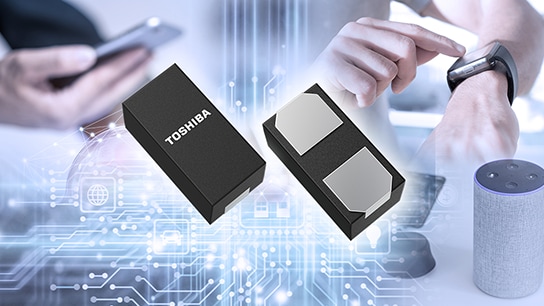- General Top
- SEMICONDUCTOR
- STORAGE
- COMPANY
-
My ToshibaSemicon
- Semiconductor Top
-
ApplicationsAutomotive
Body Electronics
xEV
In-Vehicle Infotainment
Advanced Driver-Assistance Systems (ADAS)
Chassis
IndustrialInfrastructure
BEMS/HEMS
Factory Automation
Commercial Equipment
Consumer/PersonalIoT Equipment
Healthcare
Wearable Device
Mobile
Computer Peripherals
-
ProductsAutomotive Devices
Discrete Semiconductor
Diodes
Transistors
Logic ICs
Analog Devices
Digital Devices
Wireless Devices
※
: Products list (parametric search)
Power SemiconductorsSiC Power Devices
※
: Products list (parametric search)
Isolators/Solid State RelaysPhotocouplers
Digital Isolators
Solid State Relays
Fiber Optic Transmitting Modules
※
: Products list (parametric search)
MOSFETsIGBTs/IEGTsBipolar Transistors※
: Products list (parametric search)
Diodes※
: Products list (parametric search)
MicrocontrollersMotor Driver ICsIntelligent Power ICs※
: Products list (parametric search)
Power Management ICsLinear ICs※
: Products list (parametric search)
General Purpose Logic ICsLinear Image SensorsOther Product ICsOther Product ICs
※
: Products list (parametric search)
-
Design & Development
-
Knowledge
- Where To Buy
- Part Number & Keyword Search
- Cross Reference Search
- Parametric Search
- Stock Check & Purchase
This webpage doesn't work with Internet Explorer. Please use the latest version of Google Chrome, Microsoft Edge, Mozilla Firefox or Safari.
require 3 characters or more. Search for multiple part numbers fromhere.
The information presented in this cross reference is based on TOSHIBA's selection criteria and should be treated as a suggestion only. Please carefully review the latest versions of all relevant information on the TOSHIBA products, including without limitation data sheets and validate all operating parameters of the TOSHIBA products to ensure that the suggested TOSHIBA products are truly compatible with your design and application.Please note that this cross reference is based on TOSHIBA's estimate of compatibility with other manufacturers' products, based on other manufacturers' published data, at the time the data was collected.TOSHIBA is not responsible for any incorrect or incomplete information. Information is subject to change at any time without notice.
require 3 characters or more.
How do diodes work?
Diodes have two terminals, anode and cathode. Whether current flows or not depends on the direction of voltage applied to these terminals. This operation is called rectification and is the basic operation of diodes.
A diode has two terminals: an anode (positive side) and a cathode (negative side).
The diode conducts current when the voltage at the anode is higher than the voltage at the cathode by more than a value specified in a datasheet (roughly 0.7 V in the case of silicon pn junction diodes). It does not conduct current when the difference between the anode and cathode potentials is less than this value. Such action is called rectification. This diode characteristic can be used for rectifier circuits that convert direct current to alternating current (AC-DC conversion), reverse battery protection (reverse current protection), and radio wave detection.
The bias state in which the anode terminal is higher than the cathode terminal is called forward bias, and the state in which it is lower is called reverse bias.
When a reverse bias is applied to the diode and this voltage is increased, current suddenly flows at a voltage called breakdown voltage. Breakdown voltage is almost constant irrespective of current. Utilizing this characteristic, diodes are also used in constant-voltage circuits and nowadays for ESD and surge protection. However, typical diodes are subject to degradation and permanent damage when they are operated in the breakdown region. It is therefore necessary to use dedicated diodes such as Zener diodes or ESD protection diodes for these applications.
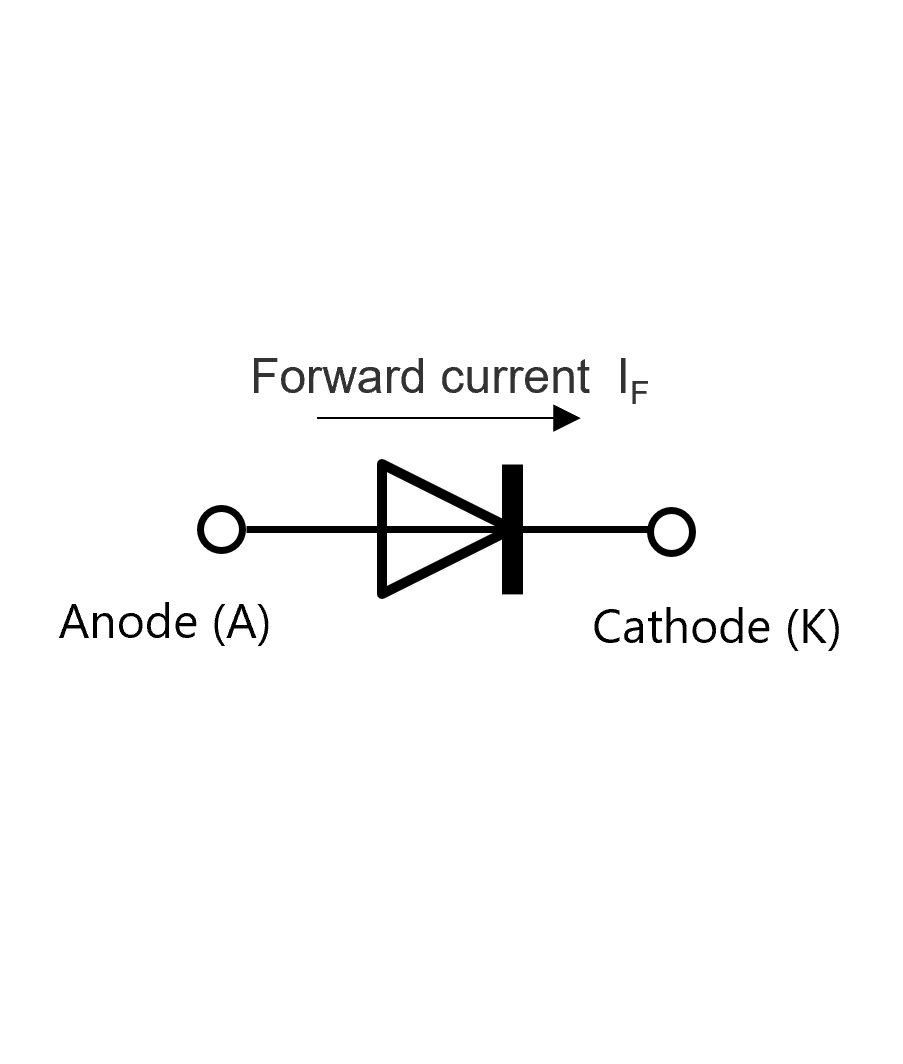
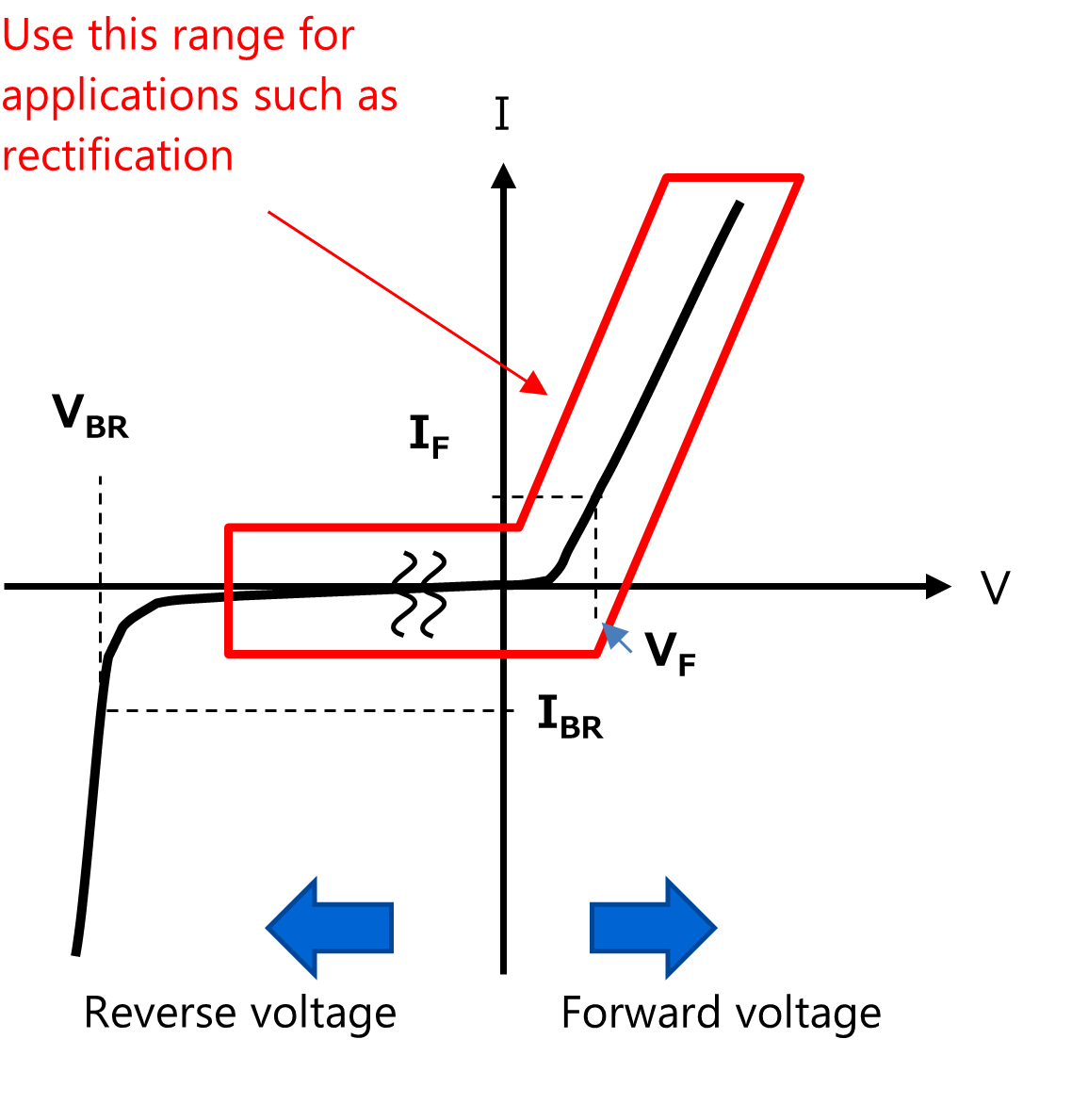
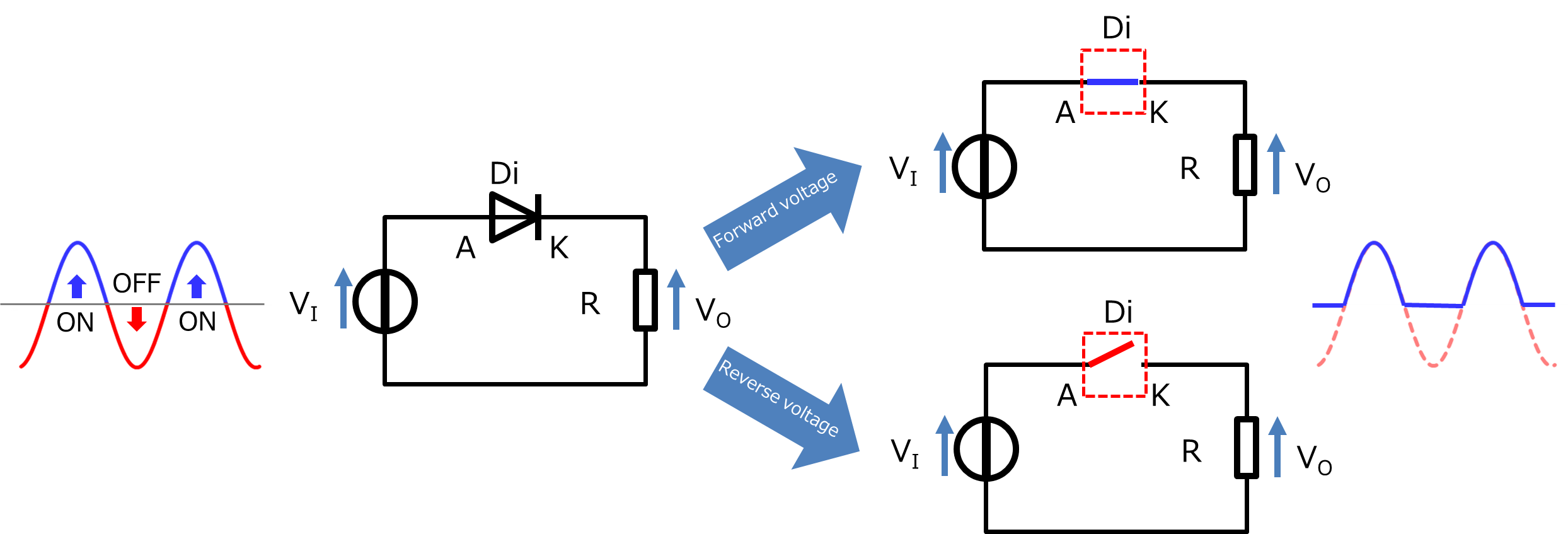
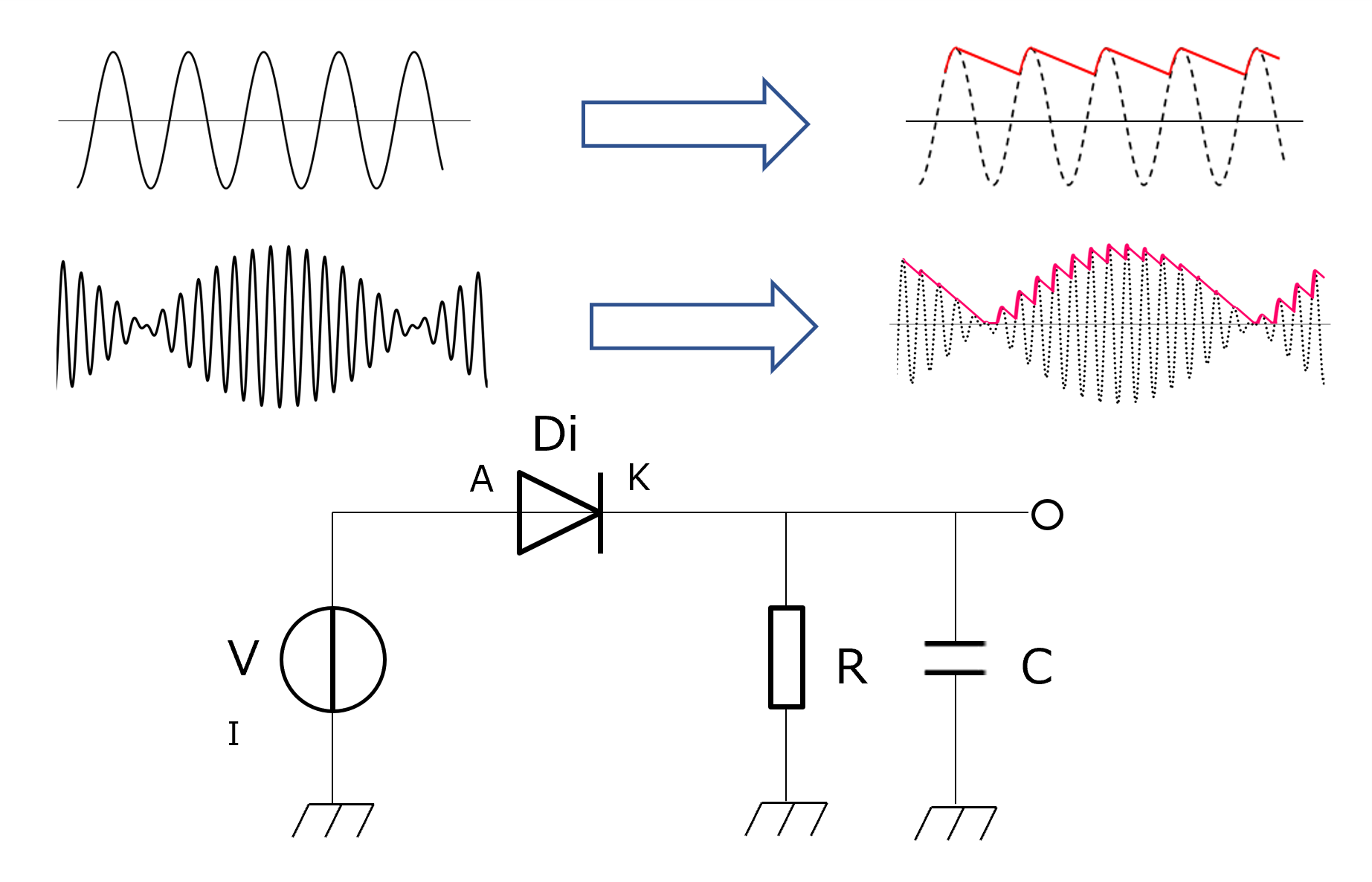
Related Links
For products, please refer to the following links.
